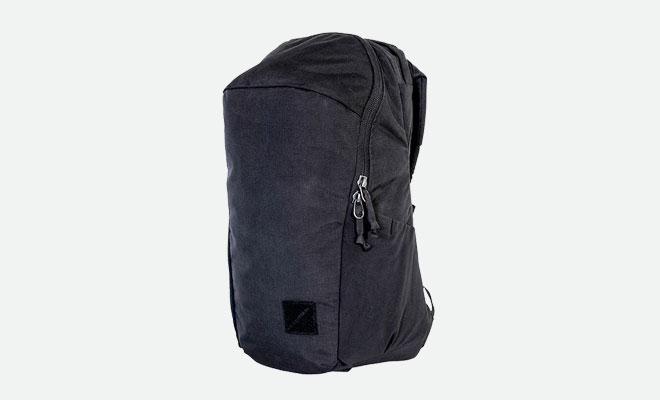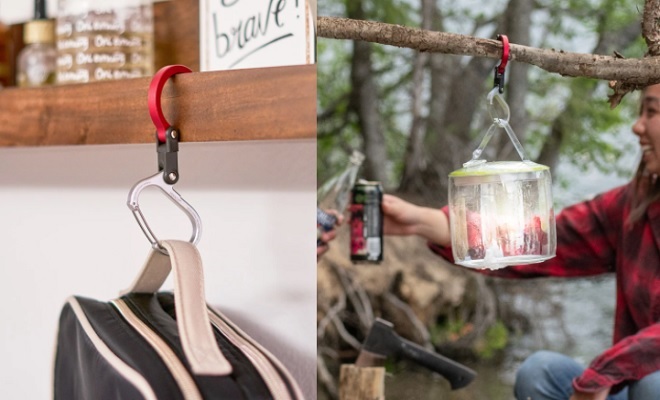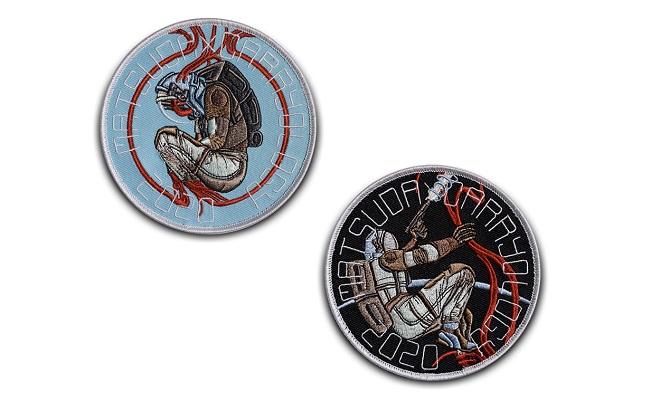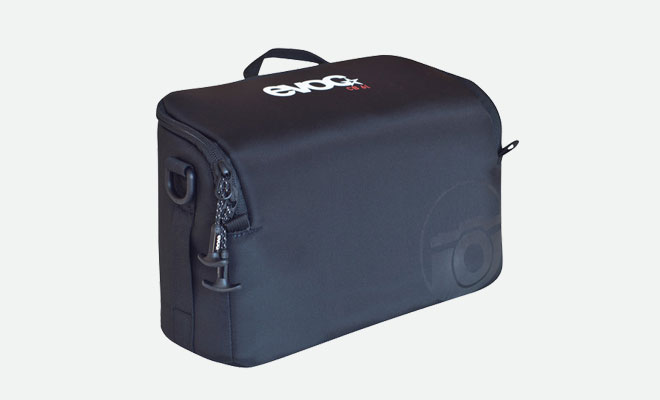The Most Popular Gear of 2020
With a new year ahead (see ya later 2020!), we thought it’d be rad to look back and celebrate the good stuff from the year that was: the killer brands and gear that resonated most with you guys, our community.
So we’ve dug into our analytics, recorded views, clicks and likes, and surveyed our Facebook group, to land on the most popular gear of 2020.
Enjoy!
Urban
Mystery Ranch x Carryology Assault Pack

A decade-old dream finally brought to life with the birth of a unicorn… Collaborating with Mystery Ranch really was a dream come true and we’re beyond chuffed that our community loved the Mystery Ranch x Carryology Assault Pack as much as we do.
Triple Aught Design Axiom 24

One of our favorite packs received a host of updates, honing the organization for an even more user-friendly experience. All wrapped up in weatherproof, durable X-Pac and a sleek, understated design able to adapt to a range of needs and settings.
EVERGOODS Signal Blue Collection

EVERGOODS brought the color pop with their limited-edition Signal Blue collection. The rich and vibrant blue colorway was introduced across a range of pieces ready for day-to-day needs and travel adventures too.
Code of Bell X-Pod

With its excellent mix of great access and organization, durable build, eye-catching aesthetics, and adaptable design, it’s no surprise that this award-winning bag retains its popularity. With its dual compartments (including an expandable front compartment), the clever design handles both larger and smaller loads, keeping you prepped to adapt to changing setups on the go.
Aer x Carryology Tokai

We’ve been big fans of Aer from their very first release. So partnering up with them was an opportunity we definitely weren’t going to miss out on. Inspired by Japanese streetwear, urban city life, and a pursuit of balance and harmony, we partnered up with the fine folks at Aer for our tenth carry collaboration. The Aer x Carryology Tokai is a dialed-in design merging premium materials and hardware, intuitive organization, and killer style for small setups.
Carryology x Bedouin KHAN

Safe to say, 2020 was one heck of a year for Carryology collabs. And we were truly honored to team up again with the inimitable Bedouin Foundry on the KHAN. Inspired by Bedouin’s Genghis, this was our shot at making the most badass messenger on the planet. Italian leather, Dyneema, AustriAlpin Cobra buckles, in one deliciously-lined silhouette that, when donning it, makes you the most interesting person in the room, period.
rofmia Daypack V2

While the original rofmia Daypack turned heads, there was room for improvement. And rofmia stepped up to make it even better, introducing the Daypack V2. Still retaining its clean styling but welcoming updates such as a larger capacity, tougher construction, improved comfort, and more convenient access through a full clamshell opening, it’s an even more impressive head-turner rightly coveted across the carry community.
Black Ember TKS

Is it a tech kit? Is it a sling? Well, it’s both. And frankly, a darn impressive design. Black Ember delivers their signature burly build and pared-back aesthetics, partnered with a clever design that straddles the pouch/sling divide. Thoughtful organization keeps your daily essentials tidy and secure, while the stowable strap lets the TKS easily transition to sling mode when desired.
Alpha One Niner EVADE 1.5 FULL

We saluted the Alpha One Niner EVADE 1.5 FULL as our Best Everyday Bag of 2020, and rightly so. Awesome organization, comfort, durability, and customization options, all coming in at truly excellent value for money. What’s not to like?
DEFY Insidious Jr. Sling

Small but mighty, the DEFY Insidious Jr. Sling is tough enough to handle whatever you can throw at it, while compact enough to keep you moving agilely with smaller loads. Built in Chicago with rugged materials and go-get-’em attitude, it’s a companion ready for the daily grind and adventures alike.
EVERGOODS Civic Half Zip 22L

One bag designed to handle work and play, merging a pared-back silhouette with a durable build, great access, and a comfy fit? Meet the Civic Half Zip 22L, a great all-rounder for handling changing daily carry needs.
Incase Commuter Backpack w/Bionic®

Incase takes a sustainable approach to carry with their Commuter Backpack featuring BIONIC® yarn. The durable yarn is made from recovered plastic pollution found in marine and coastal environments. The pack combines this recycled material with clean, office-friendly style and useful organization for tech and EDC essentials.
Tom Bihn Synik 22

The Synik 22 takes inspiration from the iconic Synapse but updates it with features such as a full clamshell opening, dual-access suspended tech storage, edgeless shoulder straps, and a choice of quick-access pockets. Plus you get plenty of fabric and colorway options to suit your personal tastes. A firm favorite, this pack scooped our 2020 Best Work Backpack award.
Kriega R20 Backpack

When COVID-19 hit, folks headed to the bike for a little freedom, and Kriega’s R20 Backpack is one of the best, honed for the motorcycle rider who wants secure carry that doesn’t compromise movement. The adjustable harness adapts to different body sizes and preferred positions for a custom fit. The Quadloc-lite™ system angles the harness away from under the arms, providing freedom of movement. You also benefit from features such as reflective detailing, four-point compression, and a removable waist strap. The pack accommodates a CE level 2 back protector or a hydration bladder and offers a tough, water-resistant build with a 10-year guarantee.
Bellroy Sling Mini

Bellroy’s Sling Mini is ideal for smaller loads that won’t fit in a pocket but don’t require a large bag. Dual zippered compartments, interior pockets, and an expandable gusset keep your gear tidy and allow the bag to adapt to a range of loads. Plus with its magnetic strap closure, it’s easy to secure and remove on the go.
EVERGOODS Civic Panel Loader 24L V2

EVERGOODS freshens up its popular CPL24 with an updated version. A comfy, ergonomic fit, tough and weather-resistant build, quick-access pockets, and lay-flat main compartment makes it a handy partner for everyday carry, with the flexibility for short trips too.
Greenroom136 PRIME Edition

Greenroom136 primes their existing pieces for maxed-out functionality in their PRIME edition. A series of existing Greenroom136 urban bags served up with full feature specifications. Each bag is handmade and limited to just 200 units.
Extended Forms Experiment 001: Laptop Daypack

Extended Forms is the brainchild of Patrick Healy, former Design Director for Tortuga Backpacks and a co-founder of Modern Industry. A collaborative design project, Extended Forms offered up the first creation with the Experiment 001: Laptop Daypack. Designed to balance minimalist and multifunctional design influences, the Dyneema daypack moves between everyday and overnight travel use. A comfortable, adaptable, and stylish pack that lends itself well to a range of needs.
Bellroy Apex
The Apex Backpack, Bellroy’s version of a concept car, unites 10 years of design insights into a pack that blends the cutting-edge in pack construction with proven and timeless luxe. The ultra-sleek, minimal design makes this pack a chameleon, transitioning smoothly from work, travel and play. The ‘tool-belt’ pockets located high up keep items out of the crush zone and leave space in the main compartment for larger items, with the side internals snapping flat when not in use. And dual access zips allow for sweet universal access to the main compartment.
EDC
The James Brand × Carryology Rover Capsule

The James Brand makes some of the finest EDC pieces on the planet. Dishing up expert blends of minimalist style, highly considered designs, and quality builds in pieces that nail the form/function balance. So teaming up with them for our first-ever EDC collab? Yes, please! The result was the Rover Capsule, a three-piece collection featuring the Ellis pocket tool, Cache River bit driver and cache, and the Stilwell compact pen. All neatly stored in a 1000D Cordura® Skinth sheath for easy pocket or bag carry.
Orbitkey x Carryology Hydra

Keychains are useful for keeping the little essentials close at hand. But what if you could elevate the humble keychain for greater functionality and ease of use? That was our goal when we teamed up with Orbitkey, and the result is the Orbitkey x Carryology Hydra. A system combining a carabiner, belt hook, and keyring, with magnetic hardware for fast yet secure attachment and deployment.
MiiR Pourigami™

Want to enjoy good coffee wherever you are? The MiiR Pourigami™ helps you on your quest, serving as a highly portable, lightweight, and compact travel coffee dripper. It disassembles for easy carry and is small enough to fit in a back pocket. Fast to set up, the three panels easily interlock to create a stable dripper setup.
Heroclip Mini

The Heroclip Mini packs a punch in compact form. Highly versatile, it rotates 360° and hangs a variety of smaller items in a range of places, from branches to towel racks, table edges, and more. It also folds compactly and is easy to carry with you every day.
Grovemade Titanium Pen

This handsome EDC pen is precision machined from solid titanium in Portland and made for a lifetime of trusty use. Smart enough for boardrooms, tough enough for daily use, and well-designed for practical use, it has three facets for a comfortable grip and to prevent rolling on surfaces. An easy, one-handed twist action reveals the tip.
Bellroy Tech Kit Compact

Tech items are notorious for disappearing into dark recesses given half a chance. Bellroy’s Tech Kit Compact stops that happening. This all-in-one storage solution provides a range of organization for neatly storing tech essentials, with easy lay-flat access. The padded exterior protects devices on the go, while the compact size and softshell body allow the kit to squeeze into tight spaces.
EVERGOODS CIVIC Access Pouch 2L

EVERGOODS steps into the pouch game with the CIVIC Access Pouch 2L and it’s a noteworthy debut indeed. The wide opening, self-standing design, and assortment of pockets makes organizing and accessing gear a breeze. Plus with its carry handles, it’s easy to use as a standalone pouch or to store in and transfer between bags.
Dan Matsuda Pouches and Patches

Dan Matsuda has been designing for well over a decade, helping Triple Aught Design create epic gear while also following the freelance path. Now fully embracing freelance design, his pouches and patches immediately capture your attention. Super functional, highly eye-catching, and utilizing unusual materials in their construction, Dan’s pieces bring a fresh feel to the pouch category and undeniable flair to your EDC setup.
Matsuda x Carryology “FALL and RISE” Artist Series morale patch set

We dig Dan’s work so much that we couldn’t wait to partner up with him on a collaborative creative project. Enter the Dan Matsuda x Carryology Fall & Rise Patches. A recognition of the tough year that 2020 has been, yet also a celebration of hope and resistance, striving to overcome challenges. The first in our Artist Series of morale patches, we were honored to team up with Dan and celebrate his exceptional skills with this limited-edition set.
Travel
MEC Vapour Overnighter Pack

MEC’s Vapour Overnighter Pack offers a great blend of travel-ready functionality and understated aesthetics that slip easily into a variety of environments. The clamshell opening provides easy packing and gear retrieval, while the highly water-resistant build keeps the elements at bay. And all for a great price too.
Mystery Ranch x Huckberry 2-Day Assault 27L

Camping trips, weekend getaways, day-long hikes with larger loads, or even daily commutes when you need to carry a little extra. This burly pack does it all. The collab pack comes in an exclusive Desert outer and bright Hunter Orange interior. Wide-open access, plenty of attachment areas for tailoring your setup, and Mystery Ranch’s renowned carry comfort make this a highly adaptable all-rounder.
Bellroy Weekender

Bellroy’s Weekender combines everything you’d expect from a carefully designed travel weekender. Casual style that moves effortlessly between various environments, a wide opening for convenient packing and access, well-thought-out organization, and multiple carry options to keep you roaming smoothly.
Peak Design Travel Tripod

In true Peak Design style, the brand approached an existing product, the humble tripod, and asked how they could make it better for travel use. Then they went ahead and designed from the ground up, shaking up the tripod industry with an innovative space-saving design that’s small enough for travel carry but sets up into a full-size tripod, packed with features to tailor your photography setup to specific needs. No surprises then that their Travel Tripod scooped our Best Accessory award for 2020.
Photography
NOMATIC McKinnon Camera Pack

Our Best Camera Bag of 2020 needs to be something special. Rest assured, the NOMATIC McKinnon Camera Pack is special indeed. This pack exudes careful consideration at every turn and has clearly been designed by people that actually do travel with photography gear. Highly adaptable for diverse travel and photography needs, this pack should be on every wandering photographer’s radar.
Evoc CB 6L Camera Block

The Evoc CB 6L Camera Block is a great option for carrying smaller camera gear setups. It can be used as a standalone bag with the removable shoulder strap or double as a protective storage cube inside a larger backpack, allowing you to turn any bag into a camera bag.
Clothing
Western Rise Diversion Pant

Western Rise makes some of the best travel clothing around. Pieces like the Diversion Pant, winner of our Best Travel Clothing category in 2020. Why is it awesome? They developed a new fabric combining four-way stretch, durability, and water resistance for freedom of movement and keeping travel laundry to a minimum. Add in the tailored style that’s easy to dress up or down and you get a pant that strides confidently into work, play, and outdoor settings alike and is a great piece for one-bag travel.
Naglev Unico Hiker

A trail runner and hiking boot in one? The Naglev Unico Hiker offers the functionality of both, in a clean and durable design featuring a one-piece Kevlar® upper and seamless construction. The shoe also offers a moisture-wicking wool sock liner, speed cable laces, and a grippy rubber outsole.
Arc’teryx Beta AR Jacket

Arc’teryx teamed up with the folks at Gore to create GORE-TEX PRO with Most Rugged Technology, an advanced material designed with excellent durability and weather protection in mind. In addition to this bomber material, the Beta AR Jacket features a RECCO® reflector as well as an updated hood and collar for a better fit. All in a packable, lightweight design that’s great for outdoor and travel use.
Vessi Cityscape Shoes

Vessi packs a bunch of features into its Cityscape Shoes, making them a great choice for both everyday and travel wear. The 100% waterproof and breathable knit pairs with an antibacterial and cushioning insole and a lightweight yet grippy outsole. And they’re made with sustainable construction in mind too.
A heads up: we’re supported by our readers. So when you buy through links from Carryology.com, we may earn a small commission, at no cost to you. This helps support us, and allows us to keep investing in our testing, reviews and editorials.





 Carry Awards
Carry Awards Insights
Insights Liking
Liking Projects
Projects Interviews
Interviews











